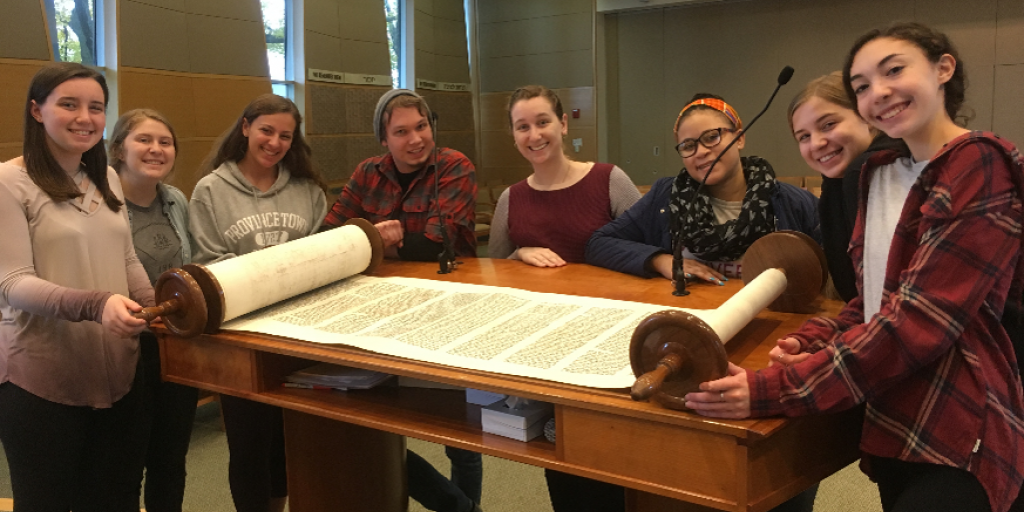According to Krister Stendahl, a Swedish theologian and New Testament scholar, three rules are essential to interreligious understanding: first, when one aims to learn about another religion, they should ask the adherents of that religion rather than its enemies; second, one should not compare their religion’s best to another religion’s worst; lastly, it is important to leave room for holy envy. The art of interfaith dialogue is rooted in both Stendahl’s three rules of religious understanding and sichah – the Hebrew word for “conversation.” Sichah is an opportunity to engage in meaningful dialogues that extends beyond small talk with another person.
In taking part in the Chamberlain Interfaith Fellowship, Stendhal’s rules of interreligious understanding were enacted through sichah and relationships developed alongside students from the Jewish faith. Under the guidance of Dr. Modica and Rachel Happel, four Jewish students from Temple Beth Shalom and four Christian students from Eastern University discussed our unique faith backgrounds through the lens of justice, current events, and beyond.
Amongst the wonderful students from Temple Beth Shalom, I had the privilege of being paired with Evie to meet bimonthly. Sitting (virtually) alongside Evie, a former stranger and current friend, we utilized Krister Stendahl’s rules of interreligious understanding to delve into discussions about our different faith backgrounds.
The art of interfaith extends into real-life importance of religious literacy within career paths. Business majors benefit from knowing how people of varying religious backgrounds lend and borrow money; nursing majors must know how people of varying religious backgrounds treat and view illness and death; youth ministry and biblical studies majors must be mindful of how to commit to sermons and dialogues that are not discriminatory towards other religious backgrounds; exercise science majors must be aware of the dietary restrictions and religious fasting periods of their athletes of varying religious backgrounds; and education majors must be cognizant of the different pedagogies that religious teachings utilize and the major holidays that students celebrate.
Regardless of how appetizing the notion may appear, I do not believe that different religions worship the same God. However, I do believe that there is a common denominator among the major world religions: loving others. I have found celebration in that, despite many differences, the world religions unite on a message of deep love for others. I certainly experienced this neighborly love in my engagement with interfaith immersion experiences and hope that others engage with the art of interfaith dialogue.

